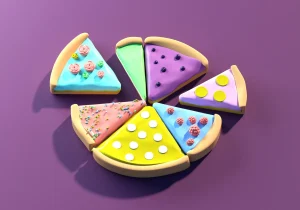Navigating the New AI Paradigm with Deep Seek R1

The tech world is abuzz with a groundbreaking development from China: the Deep Seek R1 light preview. This model boasts 01-level performance on AIM and math benchmarks, setting a new standard in AI technology.
While the Deep Seek R1 is still in its preview stage, its ability to surpass current benchmarks in just two months is nothing short of remarkable. This rapid advancement raises questions about the future landscape of AI technology.
Deep Seek R1: A Game Changer
Deep Seek R1 light preview stands out as a low-cost model, offering unprecedented performance in AI and math benchmarks. It’s akin to OpenAI’s top-tier models, yet it utilizes the innovative test time compute paradigm to enhance response accuracy. Both researchers and tech enthusiasts alike are captivated by its potential for change.
Benchmark Magic
The performance of Deep Seek R1 is evident through various benchmarks, even surpassing the renowned 01 preview model. Astonishingly, this significant leap in capabilities was achieved within just two months. Enthusiasts eagerly compare these findings with well-known models from companies like OpenAI and Google.
The discussion around these benchmarks has only just begun. The Deep Seek R1 preview opens the door to speculation on its full version’s performance. How it will stack up against leading AI models in long-term evaluations remains a topic of keen interest.
AI Art vs. Human Art
The debate between AI-generated art and human-created art is intensifying. Critics often argue that AI art lacks a personal touch, overshadowing human creativity.
Despite criticisms, AI art occasionally astounds its audience. AI-created pieces have been mistaken for human creations, highlighting their amazing capabilities. The argument here isn’t just about art, but about preserving human creativity in the face of advancing technology.
Ultimately, AI-generated art sparks discussions about the role of technology in creativity. Is it enhancing or suppressing human expression? The balance between innovation and tradition is constantly being questioned in the art world.
AI in Music Creation
AI’s influence extends beyond visual art into the realm of music. Platforms like So Music provide new creative outlets, merging technology with traditional music creation. This blend often leads to innovative musical expressions.
So Music allows artists to explore and experiment without traditional constraints. By generating diverse soundtracks, it provides unique opportunities for musicians to innovate. The platform, however, stirs debate over the value of tech-generated versus human-crafted tunes.
Music lovers appreciate the creativity that AI brings, but they also remain loyal to artists’ personal touches. This dual appreciation highlights the evolving relationship between humans and technology in creative fields.
The Changing AI Landscape
AI’s rapid evolution is marked by model updates and releases. However, not all updates bring improvements. The new GPT-40, released by OpenAI, reportedly performed less well than its predecessor.
Performance drops from the previous GPT version have affected its use in workflow processes. Users are considering sticking with older models until updates prove beneficial. This highlights the ongoing struggle for balance in AI development.
Google’s Gemini Model Takes the Lead
Google seized the AI spotlight with their Gemini experience 1121 model. Ranking high in coding, reasoning, and creative tasks, Gemini is shaking up the AI leadership. Its immediate success demonstrates Google’s enduring impact on high-performance AI.
With Gemini securing its position, OpenAI faces significant rivalry. The race for the best AI model has intensified, drawing the attention of tech enthusiasts worldwide. Google’s rapid advancements signify that the AI landscape is shifting swiftly.
While OpenAI and Google battle for dominance, users anticipate the impact of these cutting-edge models. It’s certain that the competition is just heating up.
AI’s Role in Challenging Fields
Innovative uses of AI are taking flight. One fascinating instance involves AI’s potential role in solving complex scientific problems, like those in physics. This possibility is captivating scientists and pushing boundaries.
Researchers are keenly exploring AI’s capacity to tackle intricate issues, spanning from everyday challenges to deep scientific inquiries. The excitement is palpable as they speculate on AI’s limits and possibilities.
Balancing AI Advancements and Human Values
The integration of AI into various sectors raises significant concerns. From healthcare to arts, how AI is deployed figures into discussions about ethics and its impact on human jobs.
There’s a pressing need to ensure AI advancements align with ethical standards and human values. Striking this balance is crucial as AI continues to weave into everyday life.
Debates around AI’s societal roles are ongoing and multifaceted. A careful approach is necessary to harmonize technological progress with essential human elements.
Playful AI Stories and Where They Lead
A playful encounter involving AI robots showcases AI’s humorous potential. In a tale from social media, smaller robots humorously led larger ones away from work, highlighting AI’s versatile narrative applications.
These amusing AI interactions delight audiences and serve as a reminder of AI’s evolving role in entertainment and storytelling.
Such narratives playfully explore AI’s capabilities, enhancing public fascination and understanding. They underscore the idea that AI can entertain and inform concurrently.
As the AI landscape continues to evolve, innovations like Deep Seek R1 lead the way. Their impact is significant across industries, encouraging further exploration.







